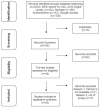User Experience in Social Robots
- PMID: 34372289
- PMCID: PMC8348916
- DOI: 10.3390/s21155052
User Experience in Social Robots
Abstract
Social robots are increasingly penetrating our daily lives. They are used in various domains, such as healthcare, education, business, industry, and culture. However, introducing this technology for use in conventional environments is not trivial. For users to accept social robots, a positive user experience is vital, and it should be considered as a critical part of the robots' development process. This may potentially lead to excessive use of social robots and strengthen their diffusion in society. The goal of this study is to summarize the extant literature that is focused on user experience in social robots, and to identify the challenges and benefits of UX evaluation in social robots. To achieve this goal, the authors carried out a systematic literature review that relies on PRISMA guidelines. Our findings revealed that the most common methods to evaluate UX in social robots are questionnaires and interviews. UX evaluations were found out to be beneficial in providing early feedback and consequently in handling errors at an early stage. However, despite the importance of UX in social robots, robot developers often neglect to set UX goals due to lack of knowledge or lack of time. This study emphasizes the need for robot developers to acquire the required theoretical and practical knowledge on how to perform a successful UX evaluation.
Keywords: UX evaluation; human-robot interaction; social robots; systematic literature review.
Conflict of interest statement
The authors declare no conflict of interest.
Figures
Similar articles
-
Home treatment for mental health problems: a systematic review.Health Technol Assess. 2001;5(15):1-139. doi: 10.3310/hta5150. Health Technol Assess. 2001. PMID: 11532236
-
More than surgical tools: a systematic review of robots as didactic tools for the education of professionals in health sciences.Adv Health Sci Educ Theory Pract. 2022 Oct;27(4):1139-1176. doi: 10.1007/s10459-022-10118-6. Epub 2022 Jun 30. Adv Health Sci Educ Theory Pract. 2022. PMID: 35771316 Free PMC article.
-
Review of guidelines for good practice in decision-analytic modelling in health technology assessment.Health Technol Assess. 2004 Sep;8(36):iii-iv, ix-xi, 1-158. doi: 10.3310/hta8360. Health Technol Assess. 2004. PMID: 15361314
-
Signs and symptoms to determine if a patient presenting in primary care or hospital outpatient settings has COVID-19.Cochrane Database Syst Rev. 2022 May 20;5(5):CD013665. doi: 10.1002/14651858.CD013665.pub3. Cochrane Database Syst Rev. 2022. PMID: 35593186 Free PMC article.
-
Factors that influence parents' and informal caregivers' views and practices regarding routine childhood vaccination: a qualitative evidence synthesis.Cochrane Database Syst Rev. 2021 Oct 27;10(10):CD013265. doi: 10.1002/14651858.CD013265.pub2. Cochrane Database Syst Rev. 2021. PMID: 34706066 Free PMC article.
Cited by
-
Does the Personality of Consumers Influence the Assessment of the Experience of Interaction with Social Robots?Int J Soc Robot. 2022 Oct 9:1-21. doi: 10.1007/s12369-022-00935-5. Online ahead of print. Int J Soc Robot. 2022. PMID: 36247491 Free PMC article.
-
The Influence of Robot-Assisted Learning System on Health Literacy and Learning Perception.Int J Environ Res Public Health. 2021 Oct 21;18(21):11053. doi: 10.3390/ijerph182111053. Int J Environ Res Public Health. 2021. PMID: 34769571 Free PMC article. Clinical Trial.
-
Care Robotics: An Assessment of Professional Perception in the Face of the COVID-19 Pandemic.Healthcare (Basel). 2023 Mar 24;11(7):946. doi: 10.3390/healthcare11070946. Healthcare (Basel). 2023. PMID: 37046875 Free PMC article.
-
User Experience Design for Social Robots: A Case Study in Integrating Embodiment.Sensors (Basel). 2023 Jun 1;23(11):5274. doi: 10.3390/s23115274. Sensors (Basel). 2023. PMID: 37300001 Free PMC article.
-
Investigating the Overall Experience of Wearable Robots during Prototype-Stage Testing.Sensors (Basel). 2022 Nov 1;22(21):8367. doi: 10.3390/s22218367. Sensors (Basel). 2022. PMID: 36366065 Free PMC article.
References
-
- Sandry E., editor. Robots and Communication. Palgrave Macmillan; London, UK: 2015. Introduction; pp. 1–10.
-
- Zhang C., Wang W., Xi N., Wang Y., Liu L. Development and Future Challenges of Bio-Syncretic Robots. Engineering. 2018;4:452–463. doi: 10.1016/j.eng.2018.07.005. - DOI
-
- Duffy B.R. Anthropomorphism and the social robot. Robot. Auton. Syst. 2003;42:177–190. doi: 10.1016/S0921-8890(02)00374-3. - DOI
-
- Malik A.A., Brem A. Digital twins for collaborative robots: A case study in human-robot interaction. Robot. Comput. Manuf. 2021;68:102092. doi: 10.1016/j.rcim.2020.102092. - DOI
-
- Graaf D.M. Ph.D. Thesis. Univesity of Twente; Twente, The Netherlands: 2015. Living with Robots: Investigating the User Acceptance of Social Robots in Domestic Environments.
Publication types
MeSH terms
Grants and funding
LinkOut - more resources
Full Text Sources



